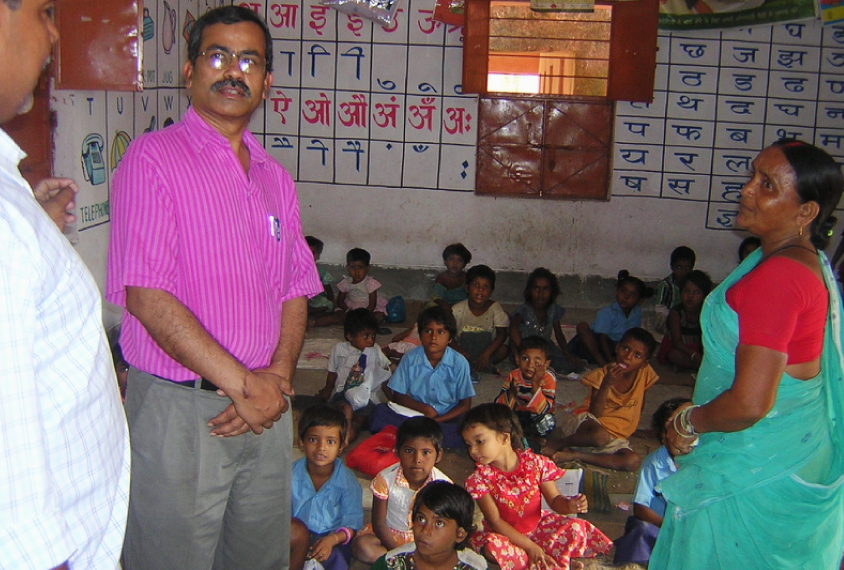
School survey in India reveals low autism prevalence
Roughly 23 of every 10,000 children in India have autism, according to the country’s first rigorous estimate of autism prevalence.
Editor’s Note
This article has been updated to include comments from two researchers not involved in the work.
Roughly 23 of every 10,000 children in India have autism, according to the first rigorous estimate of the country’s autism prevalence1.
This rate, about 0.23 percent, is far less than the 1.47 percent in the United States.
“The received wisdom is one percent of the world’s population has autism,” says lead researcher Bhismadev Chakrabarti, research director of the Centre for Autism at the University of Reading in the United Kingdom. The new finding, he says, challenges that notion: “We should not think that the one percent figure is really universal and has no cultural variability.”
Even though autism prevalence is low in India, the condition still represents a significant problem, he says. “When we are talking about 0.23 percent of 1.2 billion people, that’s a large number.”
Chakrabarti and his colleagues looked at autism features in more than 11,000 children in Kolkata, a metropolis in eastern India. They relied on a series of questionnaires completed by parents and teachers. They then clinically assessed a small proportion of the children, and found six who meet the criteria for autism. The findings were published 25 May in Autism Research.
“It’s a small sample, but it’s a very well-done study,” says Eric Fombonne, professor of psychiatry at Oregon Health and Science University in Portland, who was not involved in the work. “It’s the first benchmark for this country.”
The figure could be an underestimate, however, because nearly 20 percent of children in the city do not attend school. Autism prevalence among those children could be higher, Chakrabarti says, because children with severe autism may be less likely to go to school.
Prevalence puzzle:
Estimates of autism prevalence for many countries have relied on medical records. But when Chakrabarti’s team contacted 15 hospitals and clinics in India, they found only 1 that recorded autism diagnoses. So they decided to screen and diagnose children themselves.
The team did so in three stages, modeling their school-based screening on a 2009 study in the United Kingdom2. They first translated the questionnaires into Bengali and Hindi, the predominant languages spoken in Kolkata, and validated them for use in India.
In the first stage of the study, teachers at 27 mainstream schools and 1 special-needs school filled out a 12-item questionnaire. Altogether, they assessed the social skills and communication abilities of 11,849 students between 3 and 8 years of age.
The researchers also sent copies of the screen, called the Social Communication Disorder Checklist, home with all of the children. Parents of 5,947 children completed the assessment. Based on this, 1,247 children scored as having social and communication difficulties, core features of autism.
The researchers asked these parents to fill out a 40-item survey of autism traits called the Social Communication Questionnaire. They received completed surveys from 882 parents. Among these, 124 children scored above the cutoff for autism risk.
Manageable pool:
Chakrabarti’s team invited the 124 children for a full diagnostic evaluation. Of the 116 children who underwent the exam, 6 meet the diagnostic criteria for autism.
“It’s a very clever way to do the screening phase,” Fombonne says. “First they use a broad screen that is easy to use, then they narrow down on more autism-specific symptoms and end up with a smaller, more manageable pool of children that they assess more intensively.”
All six of the children diagnosed are boys. “That’s remarkable,” Fombonne says. Chakrabarti says the screening tools his team used may miss autism features in girls.
The researchers then extrapolated their findings from these 28 schools to all school-age children in Kolkata. (They used the teachers’ responses from the first phase of the study to account for the children whose parents did not participate.) They arrived at a prevalence of 0.23 percent.
“This is the first systematic, well-conducted study in India that has looked at such large numbers of children in schools,” says Koyeli Sengupta, director of Autism Intervention Services at the Ummeed Child Development Center in Mumbai, who was not involved in the study. Sengupta says it is likely to encourage others in India to do similar work.
Still, the estimate of prevalence should be considered preliminary, says Prathibha Karanth, director of the Communication DEALL Trust, an early-intervention program for children with autism in Bangalore. The children in the study were about 6 years old on average, but “children of this age with more severe disorders are highly unlikely to be enrolled in these schools,” says Karanth, who was not involved in the study. Future work should include younger children and use broader criteria to identify children with autism, she says.
Chakrabarti’s team is developing an app to screen for autism features in children. The app would also capture the children’s behaviors. Chakrabarti says nonspecialist workers could use the app to screen children in India for autism in their homes.
References:
Recommended reading

Expediting clinical trials for profound autism: Q&A with Matthew State

Too much or too little brain synchrony may underlie autism subtypes
Explore more from The Transmitter

Mitochondrial ‘landscape’ shifts across human brain


